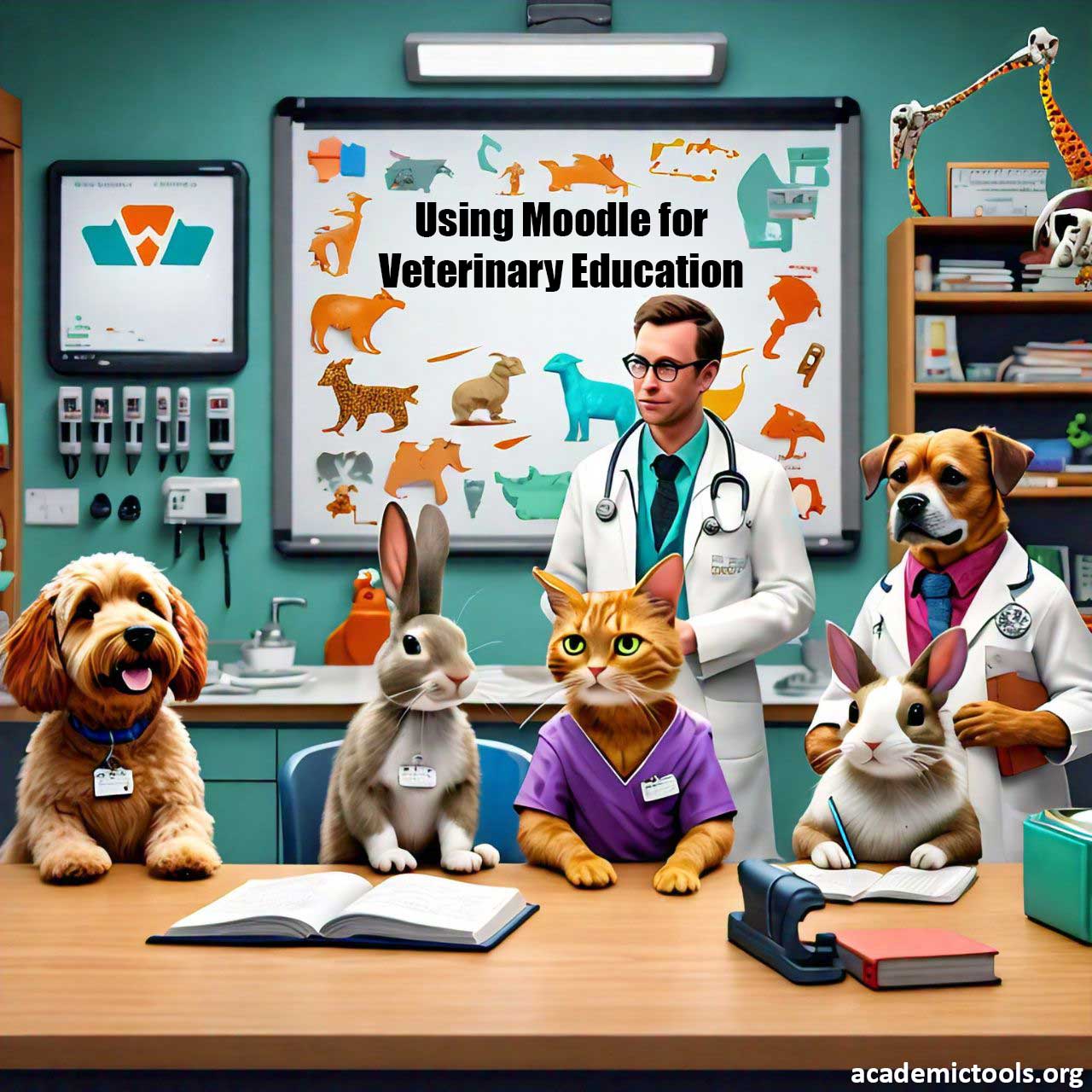The field of veterinary medicine demands a unique blend of theoretical foundations and practical expertise, making effective education and training crucial. As the demand for skilled veterinarians continues to rise, Moodle Veterinary Education offers a cutting-edge solution. Leveraging Moodle’s versatile and powerful open-source Learning Management System (LMS), educational institutions can create immersive, interactive, and inclusive learning environments that enhance veterinary training and education. By harnessing the full potential of Moodle, educators can cultivate the next generation of veterinary professionals.
Table of Contents
1. Interactive Course Content
Moodle Veterinary Education enables educators to craft engaging, dynamic, and interactive course content that brings complex veterinary concepts to life. By seamlessly integrating multimedia elements – such as videos, 3D animations, and interactive diagrams – educators can illustrate intricate biological processes, surgical techniques, and clinical procedures in a highly visual and immersive way. This interactive approach enhances students’ understanding, retention, and application of critical veterinary knowledge, ultimately enriching their learning experience.
2. Practical Skills Development
Moodle Veterinary Education bridges the gap between theoretical knowledge and practical application, offering a safe and controlled environment for hands-on training. Through virtual simulations and practical assessments, students can rehearse and refine their clinical skills, such as surgical procedures, patient consultations, and diagnostic techniques. These realistic simulations, facilitated by Moodle, enable students to build confidence, develop muscle memory, and enhance their competence before transitioning to real-world patient care.
3. Assessment and Feedback
Moodle provides robust tools for assessing student performance and offering feedback. Educators can create quizzes, assignments, and exams tailored to veterinary subjects, such as anatomy, pharmacology, and clinical practices. Automated grading and detailed feedback options help students identify areas for improvement and track their progress over time.
4. Collaborative Learning
Moodle Veterinary Education facilitates the development of essential teamwork and communication skills, preparing students for successful collaboration in clinical practice. Leveraging Moodle’s collaborative features, such as discussion forums, group projects, and peer reviews, students can engage in dynamic knowledge-sharing, debate case studies, and work together on research projects. By fostering a sense of community and promoting interprofessional collaboration, Moodle Veterinary Education helps students become effective team players, ready to thrive in the fast-paced veterinary profession.
5. Resource Repository
Moodle serves as a centralized repository for educational resources. Instructors can upload lecture notes, research papers, e-books, and other reference materials that students can access at any time. This ensures that students have continuous access to valuable information, enhancing their learning experience.
6. Blended Learning Approach
Moodle Veterinary Education empowers educators to adopt a flexible blended learning approach, seamlessly integrating online and face-to-face instruction. This hybrid model is particularly suited to veterinary education, where students require a balance of theoretical foundations and practical skills training. With Moodle, educators can efficiently deliver lectures, coursework, and assessments online, reserving valuable in-person sessions for hands-on lab work, clinical simulations, and mentorship, optimizing student learning outcomes.
7. Continuing Education and Professional Development
Veterinary professionals must engage in ongoing education to stay current with advancements in the field. Moodle facilitates continuing education by offering online courses and certifications. Veterinary institutions can use Moodle to provide professional development programs, ensuring that veterinarians remain knowledgeable and up-to-date with the latest practices and technologies.
8. Global Collaboration
Moodle Veterinary Education facilitates global connectivity and collaboration, bridging geographical gaps between veterinary institutions and professionals worldwide. By leveraging Moodle’s online platform, schools can share courses, research findings, and best practices, promoting a global exchange of knowledge and resources. This international collaboration enhances the quality and accessibility of veterinary education globally, fosters strategic partnerships, and advances the profession as a whole.
9. Customization and Scalability
Moodle’s open-source nature allows for extensive customization to meet the specific needs of veterinary programs. Institutions can tailor the platform’s features and appearance to align with their curriculum and branding. Additionally, Moodle is scalable, making it suitable for small classes as well as large veterinary schools.
Conclusion
Moodle Veterinary Education provides a tailored solution for the complex and dynamic field of veterinary medicine. By harnessing Moodle’s interactive content, immersive simulations, robust assessment tools, and collaborative features, educators can revolutionize their teaching methods, drive student engagement, and improve learning outcomes. As the veterinary profession continues to advance, Moodle’s flexible and scalable platform supports the ongoing education and development of future veterinarians, ensuring they stay up to date with the latest research and best practices, visit the American Veterinary Medical Association (AVMA) website for more information on veterinary education and professional development.



